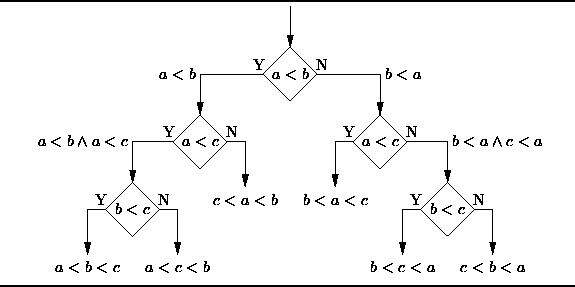From Wiki, Join can do this.
Symbolic[edit]
When access to digital computers became possible in the middle 1950s, AI research began to explore the possibility that human intelligence could be reduced to symbol manipulation. The research was centered in three institutions: Carnegie Mellon University, Stanford and MIT, and as described below, each one developed its own style of research. John Haugeland named these symbolic approaches to AI "good old fashioned AI" or "GOFAI".[144] During the 1960s, symbolic approaches had achieved great success at simulating high-level thinking in small demonstration programs. Approaches based on cybernetics or artificial neural networks were abandoned or pushed into the background.[145] Researchers in the 1960s and the 1970s were convinced that symbolic approaches would eventually succeed in creating a machine with artificial general intelligence and considered this the goal of their field.
My application, one of many, is about distillinging the symbolic content of text, like Watson. But I am a cog in the giant machine of the join industry.
I have a bold plan, turn the existing web pages into a single, coherent knowledge bases represented by structures of small words lists.
I have a bold plan, turn the existing web pages into a single, coherent knowledge bases represented by structures of small words lists.
Knowledge-based[edit]
When computers with large memories became available around 1970, researchers from all three traditions began to build knowledge into AI applications.[152] This "knowledge revolution" led to the development and deployment of expert systems (introduced by Edward Feigenbaum), the first truly successful form of AI software.[38]Key component on system architecure for all expert systems is Knowledge base, which stores facts and rules that illustrates AI.[153] The knowledge revolution was also driven by the realization that enormous amounts of knowledge would be required by many simple AI applications.
Now join may not be well suited to neural nets and Huffman trees. I dunno. Join can certainly match any tree, binary, trinary and so on. Huffman codes are a probability distribution. There is a lot of overlap.
Likely, a well written dll can decompose a neural net into a series of tree concolutions that are stacked in the join machine, but I haven 't looked yet.
Here is the fundamental Hopfield equation for neural nets:
The fundamental equation is the accumulation of every node with every other node, except itself generally. Have to do that with sometimes sparse networks, they are not directed graph. But join is likely ove kill for a short set of do loops. But with the match function one has a lot of flexibility The point of the neural net is that it a;ways converges to a guess about the input data. We can do one of these, maybe read some research.
I look at all this stuff, and I am thinking about what? The macro command processor, can it be set up to configure and run a variety of attachments and match functions simultaneously?
Here is the fundamental Hopfield equation for neural nets:
The fundamental equation is the accumulation of every node with every other node, except itself generally. Have to do that with sometimes sparse networks, they are not directed graph. But join is likely ove kill for a short set of do loops. But with the match function one has a lot of flexibility The point of the neural net is that it a;ways converges to a guess about the input data. We can do one of these, maybe read some research.
I look at all this stuff, and I am thinking about what? The macro command processor, can it be set up to configure and run a variety of attachments and match functions simultaneously?


No comments:
Post a Comment